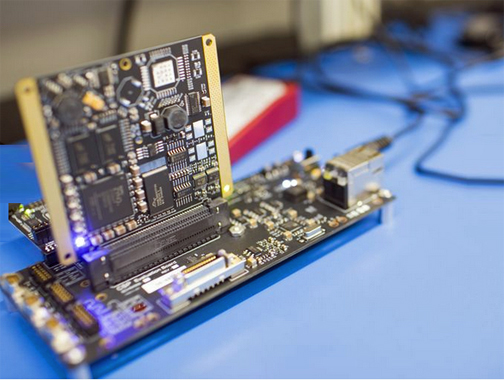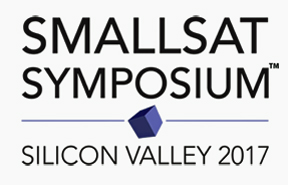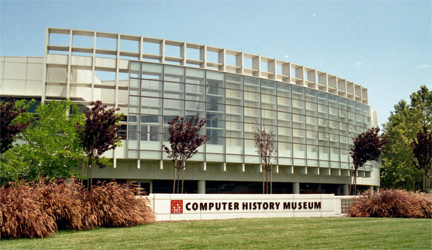
If the size and scope of the Apollo missions are comparable to Imperial Star Destroyers, then the CubeSat being built at Arizona State University is like the probe droid that was sent to Hoth.

Arizona State University's LunaH-Map smallsat at the board level.
A CubeSat is a satellite about the size of two loaves of bread that costs a fraction of traditional NASA technology. The spacecraft are built to gather information on a more focused set of questions because their size limits what they can accomplish in space.
Craig Hardgrove is the principal investigator of the ASU-based mission which is called LunaH-Map because of the craft's goal to map the distribution of hydrogen on the moon. A little less than a year ago, LunaH-Map was selected by NASA as one of 13 CubeSat missions to be launched in 2018. In May, the team’s lab officially opened up shop on campus.
Hardgrove and his team recently began to assemble the spacecraft. They've made progress on the communication system that will eventually have to fit into the satellite, he said. Currently, however, the wires and hardware that litter the tabletops don’t seem like they could ever be condensed to fit inside such a small craft. The radio and the “brain” of the soon-to-be CubeSat are laid out on two boards. While the pieces are being assembled, they’re referred to by the more apt name—FlatSat. A FlatSat, Hardgrove said, is like “if you took the whole box and spread it out on the table. It’s not meant to simulate the mechanical function or how everything’s going to fit together, but it represents how it’ll talk.”
Getting the two systems to communicate was a small but important achievement in the early stages of design, Hardgrove said. Getting them to fit, however, will be a whole separate odyssey. Igor Lazbin, the chief engineer for LunaH-Map, is in charge of packaging together all the components of the CubeSat so the smallsat will make it to the moon. The team has to work within specific weight and volume requirements—Lazbin said he's constantly in the process of selecting what and what not to put inside the satellite. He said that they'd like to include more functionality and do more things, but are pretty heavily restricted by size and mass.
“I think NASA is hoping for these very tiny spacecraft to play a role in space exploration, even large missions in the future,” Hardgrove said.
Satisfy Your Appetites For Smallsat Knowledge
Attend The SmallSat Symposium—Silicon Valley 2017
Tuesday, February 7th — Wednesday, February 8th
Computer History Museum, Mountain View, California

As with any event, one of the major draws in regard to the time commitment necessary for attendance will most assuredly revolve around the expertise that will be offered to those who participate... there can be little question that the subject matter experts who will be presenting at the SmallSat Symposium—Silicon Valley in 2017 will blend their expertise with the unparalleled networking opportunities with one's smallsat, SATCOM and MILSATCOM peers.
The Computer History Museum in Mountain View, California.

This incomparable event will be held at the Computer History Museum in Mountain View, California, a perfect location for the technology-rich environs of the smallsat worlds. Listed below are the sessions already planned for the SmallSat Symposium. For information regarding the various workshops, please select this direct link. To learn more about the individual speakers who have already committed to the SmallSat Symposium—Silicon Valley, access this direct link.
Day 1 Events — Tuesday, February 7th, 2017
- The State of the Small Satellite Industry
- Financing Small Satellite Operations
- Launch Provider Roundtable – Efficiency, Risk & Trends
- Ground Systems Economics Architecture
- Pricing and Marketing SmallSat Services
- Cost Savings in Small Satellite Alternatives
- Wine & Hors d'Oeuvres Reception
Day 2 Events — Wednesday February 8th, 2017
- Keynote Speaker— Professor Sir Martin Sweeting, Founder and Executive Chairman, Surrey Satellite Technology Ltd.
- Small Satellite Constellation Dynamics
- Earth Observation
- Securing Capital In New Small Satellite Ventures
- Traditional Large Integrators—What is their Role in the SmallSat Industry?
- Next Generation Technology
- Defense and Government Applications
- Concluding Remarks
The first 100 registrations qualify for a $200 discount on the standard event admission—take advantage of this saving and register today at this direct link...
To register, please visit http://www.cvent.com/d/0fqt81/4W
To learn more about the sessions, please head over to http://smallsatshow.com/home-page/sessions/

